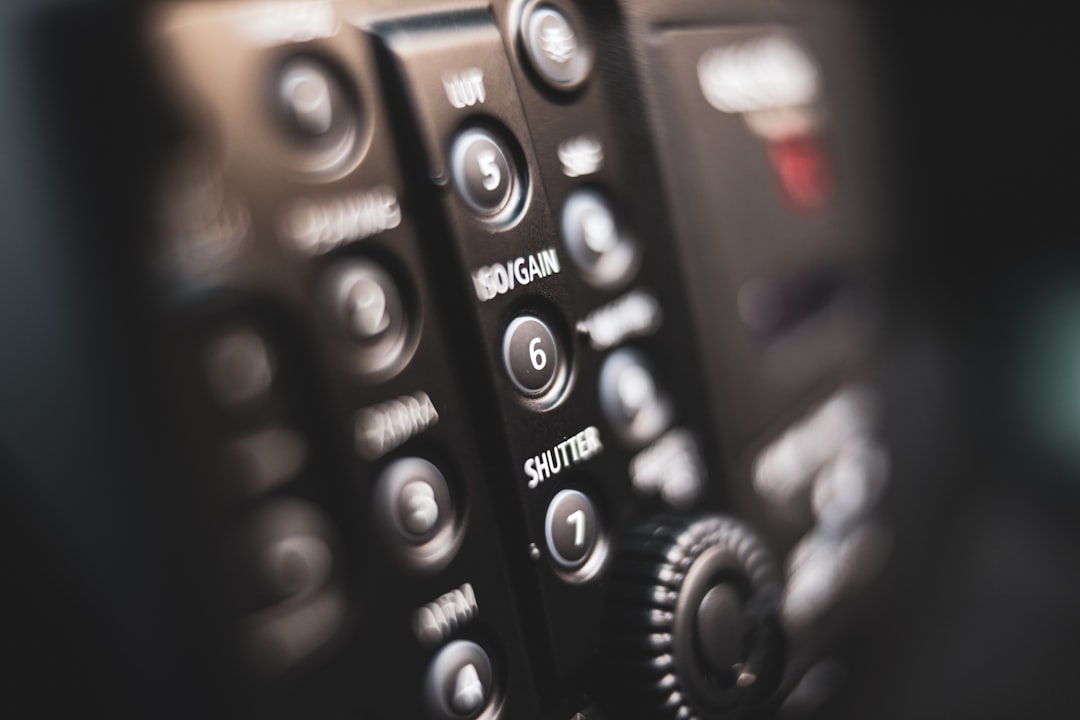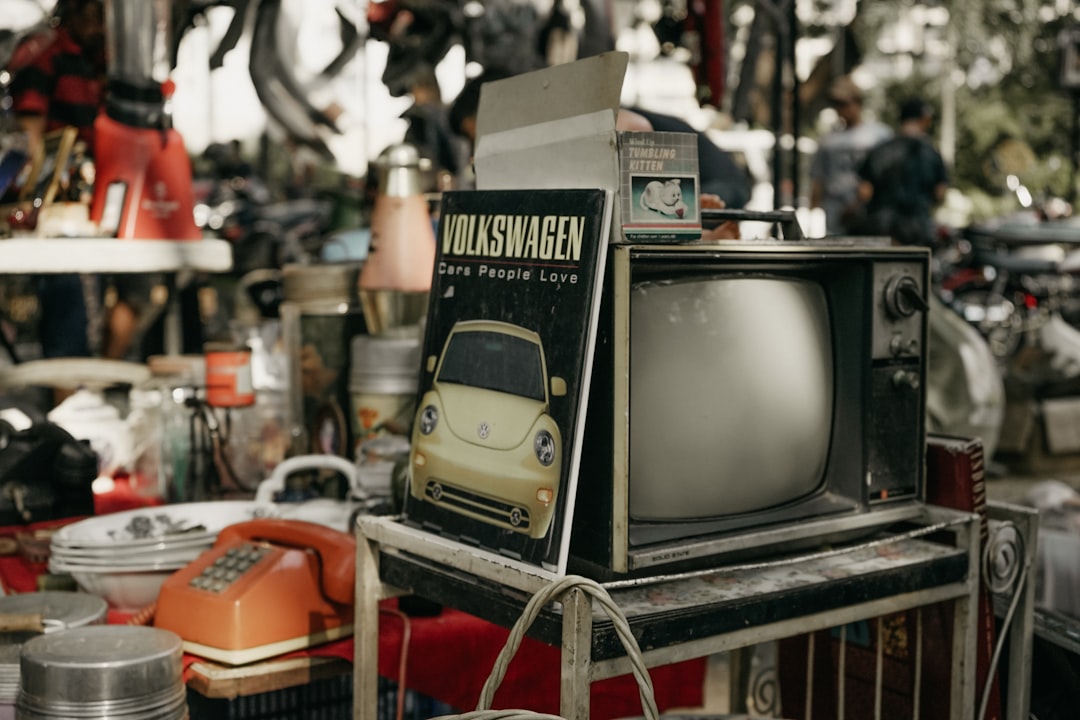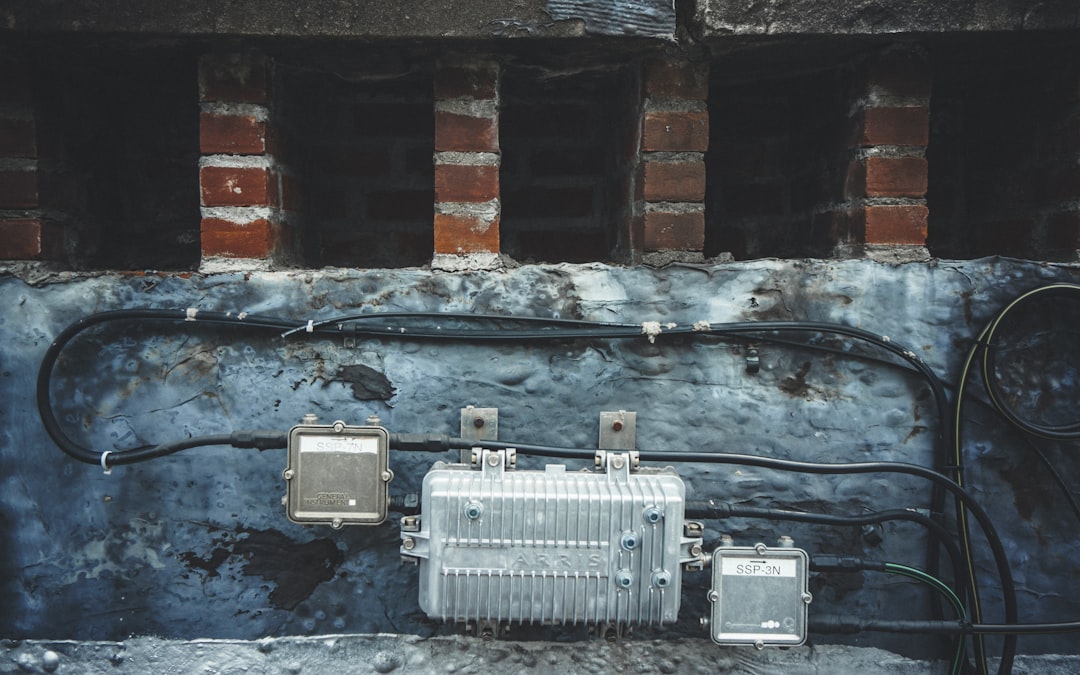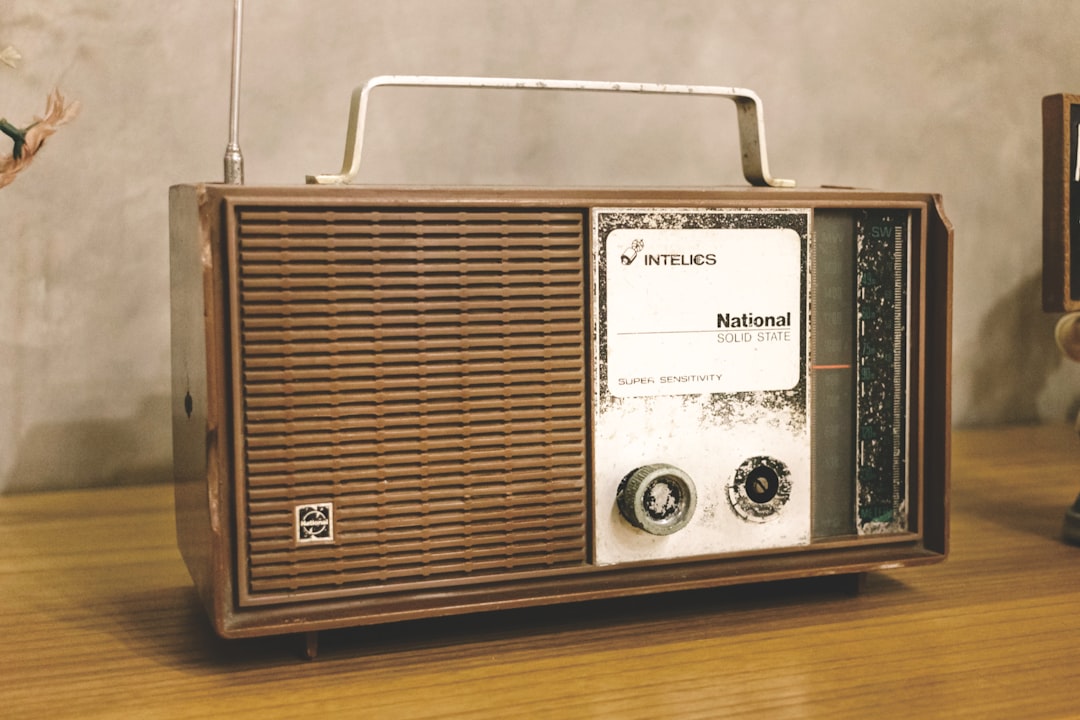

Engage prospects with a scan and streamline customer engagement with FREE QR code marketing tools by Sona – no strings attached!
Create a Free QR CodeFree consultation

No commitment

Engage prospects with a scan and streamline customer engagement with FREE QR code marketing tools by Sona – no strings attached!
Create a Free QR CodeFree consultation

No commitment
In today’s digitally driven world, QR codes have evolved from a novelty to a strategic powerhouse, especially critical for TV and radio repair services striving to bridge offline engagement with online action through mobile marketing. Yet, despite this potential, many in the industry still face frustrating disconnects: missed high-value prospects who never complete a form, lead data that remains siloed in analog paperwork, and limited ability to trace which physical marketing actually drives customer action.
TV and radio repair services face unique challenges as they navigate digital transformation. Customers not only demand faster solutions and instant access to support guides, but also expect convenient scheduling and rapid response, placing pressure on businesses to unify their customer journey. Too often, prospects browse print materials or service tags, yet remain unknown and untracked, resulting in lost opportunities and delayed follow-up.
QR codes are a proven tool to tackle these gaps, as seen in qr codes in marketing, empowering repair experts, front-desk staff, and marketers alike to convert each physical touchpoint—appointment cards, invoices, signage—into a direct digital experience. Integrated thoughtfully, QR workflows become an efficient method to capture intent, nurture prospects, and deliver operational efficiency, all while closing the data visibility gaps that have historically held the industry back.

Many repair businesses struggle when paper processes lead to dropped leads or delayed follow-up, as critical engagement signals simply are not captured in real time. QR codes bridge the gap between these physical touchpoints and digital outcomes, making it possible to respond to a customer’s interest in the exact moment they are ready to connect. When the path to action is a scan instead of a phone call, a URL entry, or a paper form, conversion rates rise, queue times fall, and teams gain immediate context for smarter follow-up.
Start by mapping your most common offline interactions to digital destinations that remove friction. Replace printed brochures with scan-to-video demos that explain common TV reception issues. Swap manual sign-up sheets at the counter with scan-to-booking forms that instantly confirm appointments and send reminders. Each swap streamlines the journey for customers and gives your team a steady stream of structured data.
Replacing static brochures and manual sign-up sheets with QR-powered digital journeys ensures that every interaction is both actionable and measurable, turning anonymous interest into tangible opportunity. Platforms that integrate scanning, data capture, and follow-up, such as Sona QR, simplify orchestration and help address the chronic issue of missed or delayed lead engagement.

Many repair providers still find that their offline-to-online conversion is weak. Physical flyers, product stickers, or direct mail often fail to turn interest into action, especially when customers must hunt for contact details or complete manual forms. When outreach relies on memory or a later call, intent decays and competitors win. QR codes eliminate those gaps by providing a direct, low-friction path from a physical encounter to a digital action, as demonstrated in advertising campaigns.
In TV and radio repair, moments of need are highly contextual. Someone standing at a service counter wants a quick check-in. A homeowner reading a door hanger wants a repair estimate without calling. A customer picking up a repaired unit wants to leave a review in seconds. QR codes enable all of these actions quickly, while preserving the data required for future optimization.
Within TV and radio repair, QR code deployments not only bridge offline to online moments, but also surface previously invisible signals, turning anonymous engagement into known prospects who can be nurtured and converted.

In practice, repair service providers often struggle to match the right digital resource to the most frequent customer need. A customer with a no-signal complaint needs troubleshooting steps, not a generic homepage. A busy front desk needs a fast check-in flow, not another phone call. QR codes offer flexible formats that map to specific use cases and outcomes.
Leverage formats based on the action you want. Use a web link for scheduling and estimates, a vCard for technician follow-up, and an SMS template for quick status updates. Dynamic versions of these codes allow updates and analytics that help you learn which content and placements perform best.
Dynamic formats are especially valuable for repair services because they handle frequent changes in pricing, service menus, or promotions. With dynamic codes, you can swap destinations quickly and capture analytics that show which campaigns drive high-value actions.

A frequent industry pain is failing to engage walk-in or offline audiences, leaving key growth channels underleveraged. The average shop has dozens of physical surfaces that customers notice. QR codes turn each into a measurable onramp to your funnel and convert fleeting attention into meaningful action.
To prioritize placements, start where intent is highest and where customers already pause. Counters, pickup desks, waiting areas, storefront windows, and product packaging all offer prime real estate. Align each code with a single, specific outcome that moves the customer forward.
In all these placements, QR codes transform overlooked analog moments into data-driven growth levers. They make it easy for customers to act, and they give your team a reliable signal to prioritize follow-up and measure what works.
Persistent challenges in repair services include missed leads from untracked estimates, self-service confusion, and low post-service engagement. QR code use cases directly address these frustrations and accelerate the customer journey without adding staff workload.
Think of each use case as a conversion micro-moment. The customer has a need, your physical environment presents a code, the scan resolves their need while capturing useful context for your team. Over time, these small wins compound into a more efficient operation and a stronger brand reputation.
If your shop offers ongoing maintenance plans or antenna installations, expand with codes for plan enrollment or installation checklists. Customers appreciate transparency and speed, and your team benefits from structured, trackable data.
In traditional repair settings, customer journeys are fragmented, resulting in unknown visitors, missed upsell opportunities, and audiences that are difficult to segment for follow-up marketing. Each QR code scan captures valuable context and can transform fragmented data into actionable intelligence that powers retargeting, cross-sell, and loyalty initiatives. For help turning unknown visitors into known accounts, see Sona account identification.
To build high-value audiences, deploy unique codes tied to journey stages and actions. Knowing whether someone scanned a troubleshooting guide, a warranty registration, or a booking link lets you personalize follow-up. Pair this with timing and location context to distinguish between casual interest and active purchase intent.
In TV and radio repair, helpful distinctions include warranty claimants versus out-of-warranty owners, brand-specific device owners, and recurring service plan members. Each segment responds best to tailored education, timely promotions, and relevant accessories.
Disconnected campaigns are a recurring headache for repair businesses, often causing inconsistent customer experiences and wasted marketing spend. QR codes act as connectors, ensuring that messaging and data flow smoothly between traditionally siloed channels. When a customer sees a poster, a social post, or a receipt, the scan unifies their journey and anchors it to a single customer profile.
A modern marketing mix balances local visibility with digital convenience. Use QR codes to ensure every channel can capture intent, enrich your CRM, and deliver a consistent call to action. This single action reduces friction for customers and removes guesswork for your team.
QR codes serve as the offline onramp to your digital marketing engine and unlock a new layer of data collection across channels that were once difficult to measure. With a centralized platform like Sona QR, you can manage all your codes, monitor performance, and sync scan data with your CRM and ad platforms for closed-loop reporting.
Repair businesses often falter by launching QR efforts without a clear framework, which leads to scattered data and undefined outcomes. A deliberate, stepwise approach ensures that every campaign is purposeful, measurable, and easy for customers to use. The following checklist is tailored to TV and radio repair workflows and can be adapted to shops of any size.
Start with one or two high-impact use cases, such as scan-to-booking at the counter and scan-to-review on receipts. Once those are performing, expand to quotes, status updates, and loyalty offers. The goal is to make QR codes a natural part of how you communicate, not an isolated experiment.
Clarify the single action each QR code should drive; then design the destination to make that action effortless. Align the use case with a tangible business outcome so success is easy to measure and celebrate.
Choose the format and flexibility you need. Static codes are fine for fixed assets, while dynamic codes allow real-time edits and comprehensive analytics.
Good design and testing protect you from the most common causes of low scan rates. The best QR campaigns are easy to see, easy to understand, and easy to scan.
Roll out codes where they will have maximum exposure and where customers can take immediate action. Match the message to the moment so every scan feels useful.
Treat QR codes as performance media. Collect the data, review it regularly, and tune your creative, placements, and destinations based on what you learn.
Centralized platforms like Sona QR make these steps repeatable and measurable, reducing administrative burden and helping you learn from each campaign iteration.

A pervasive industry frustration is the inability to link offline marketing activity with revenue results, which forces decisions based on gut instinct. Actionable QR code analytics change the equation by tracking the journey from scan to booked job, to pickup, to review. With complete visibility, you can prove what works and reinvest where it matters. See Sona’s offline attribution for deeper strategies.
Analytics should answer key questions: which assets are scanned most, which scans convert to quotes or bookings, and which bookings become paid jobs. With this insight, you can refine creative, shift placements, and personalize follow-up to strike while intent is high.
With Sona QR for capture and Sona, an AI-powered marketing platform that turns first-party data into revenue, for identity resolution and multi-touch attribution, repair teams can connect real-world scans to pipeline and revenue. The result is a performance-ready QR program that drives repeatable growth.
Repair shops can fall into the trap of “set and forget,” which leads to underperforming codes and missed attribution. A few practical adjustments and creative placements can dramatically improve scan rates, conversions, and downstream revenue.
Prioritize clarity and immediacy. Customers scan when they understand the benefit and when they can complete the task in seconds. Keep destinations laser focused, automate follow-up, and use data to guide continuous improvement.
Consistent use of a centralized QR management platform like Sona QR helps orchestrate these activities. You can generate and track your first codes quickly, then scale to cover every high-impact touchpoint.
TV and radio repair businesses, long accustomed to analog workflows, face mounting pressure to capture demand before it slips away, whether through lost paperwork or untracked prospect interest. QR codes, when strategically integrated, become more than a digital shortcut. They serve as the connective tissue between every physical and online moment, surfacing signals that were previously invisible and enabling carefully timed outreach.
With QR codes embedded at every high-impact customer touchpoint, repair specialists can guide customers seamlessly from first discovery through repeat service, while attributing revenue and feedback with precision. The result is a customer experience that feels effortless and a marketing engine that is measurable across channels.
TV and radio repair services are navigating a world where missed touchpoints and delayed responses can make or break success. By thoughtfully leveraging QR codes, these businesses close the gap between old-school interactions and data-powered engagement, resulting in streamlined operations, measurable growth, and loyal, returning customers. With Sona QR, you have everything you need to capture demand at the source and convert it into results you can prove. Start creating QR codes for free.
QR codes have revolutionized the TV and radio repair services industry by transforming traditional service interactions into seamless, data-driven experiences. Whether it’s streamlining customer onboarding, providing instant access to troubleshooting guides, or enabling efficient appointment scheduling, QR codes eliminate friction and enhance every touchpoint. Imagine empowering your customers to scan a code on their device or equipment and immediately access personalized repair instructions or service history—boosting satisfaction and loyalty.
With Sona QR, you gain the ability to create dynamic, trackable QR codes that you can update instantly without reprinting, ensuring your repair service materials stay current and effective. Each scan delivers valuable insights into customer needs and behaviors, helping you optimize service offerings and grow your business. Start for free with Sona QR today and turn every scan into a faster repair, a happier customer, and increased revenue.
You can scan QR codes placed on repair tags, invoices, or signage to access instant troubleshooting guides, device triage steps, or self-service tutorials that simplify and speed up TV and radio repairs.
Look for repair services that integrate QR codes for booking, quotes, and support, enabling faster response times and convenient digital interactions, often tracked and enhanced by platforms like Sona QR.
The article does not specify repair costs but highlights that QR codes improve efficiency and customer experience, potentially reducing costs by streamlining appointment booking and support processes.
Common issues include missed leads from untracked estimates, slow follow-up, repetitive basic support calls, and low post-service engagement; QR codes help by providing instant quotes, troubleshooting guides, and easy feedback channels.
QR codes convert physical touchpoints into digital experiences that enable instant booking, repair quotes, self-service tutorials, status updates, and feedback collection, all while capturing data to optimize marketing and operations.
Place QR codes on appointment cards, product tags, service counters, storefront windows, direct mail, door hangers, receipts, and packaging inserts where customers naturally look and can easily scan.
Effective QR code formats include web links for booking and quotes, vCards for contact sharing, SMS or email templates for status updates, Wi-Fi access for in-store support, and app download links for service apps.
Dynamic QR codes provide analytics on scan volume, location, and conversion rates, enabling repair services to see which physical materials drive bookings and revenue and to optimize campaigns accordingly.
Steps include choosing a focused use case, selecting the appropriate QR code type, designing and testing the code for ease of scanning, deploying codes in high-impact locations, and tracking performance to optimize results.
Each QR code scan captures context about customer needs and journey stage, allowing segmentation and tailored follow-up through CRM and ad platforms, which supports personalized retargeting and loyalty initiatives.
Dynamic QR codes allow real-time updates to destinations without reprinting, provide detailed analytics for performance tracking, and enable automated follow-up triggered by scans, improving flexibility and ROI.
Train staff to promote scanning by explaining the benefits, use clear branding and calls to action on codes, and place codes where customers naturally pause, making scanning easy and rewarding.
Challenges include lost or delayed lead follow-up due to analog processes, anonymous customer interest, fragmented journeys, and difficulty linking offline marketing to revenue.
They provide instant access to booking, quotes, troubleshooting, and feedback with minimal friction, reduce wait times, and create a seamless offline-to-online journey that feels effortless to customers.
Analytics track scan behavior, conversion rates, and revenue attribution, enabling repair services to optimize marketing spend, personalize follow-up, and prove which campaigns generate closed jobs and repeat business.
Use Sona QR's trackable codes to improve customer acquisition and engagement today.
Create Your FREE Trackable QR Code in SecondsJoin results-focused teams combining Sona Platform automation with advanced Google Ads strategies to scale lead generation

Connect your existing CRM

Free Account Enrichment

No setup fees
No commitment required

Free consultation

Get a custom Google Ads roadmap for your business






Launch campaigns that generate qualified leads in 30 days or less.
